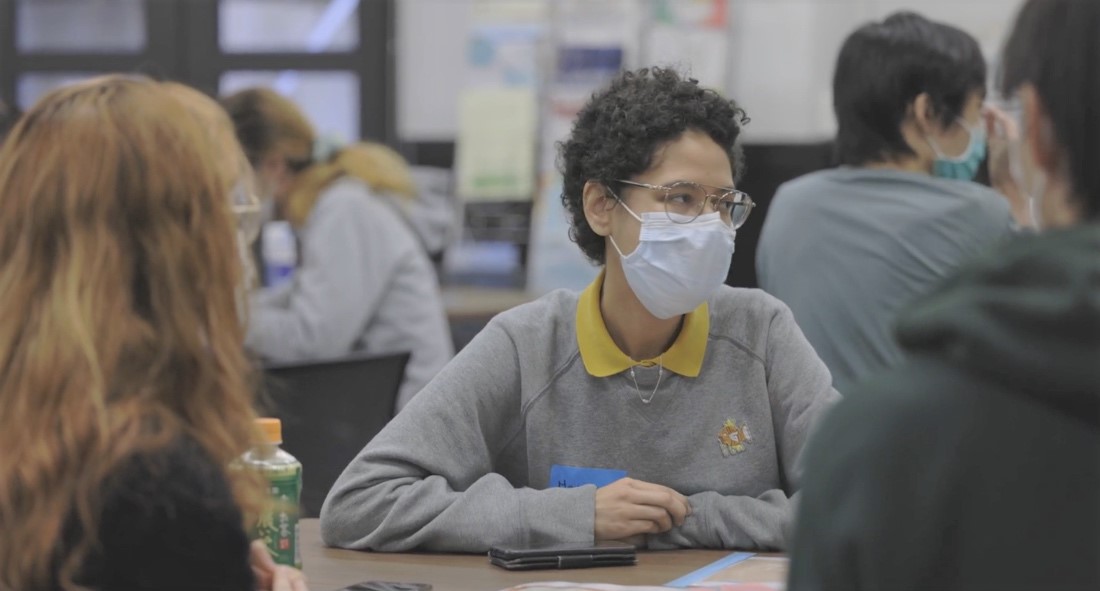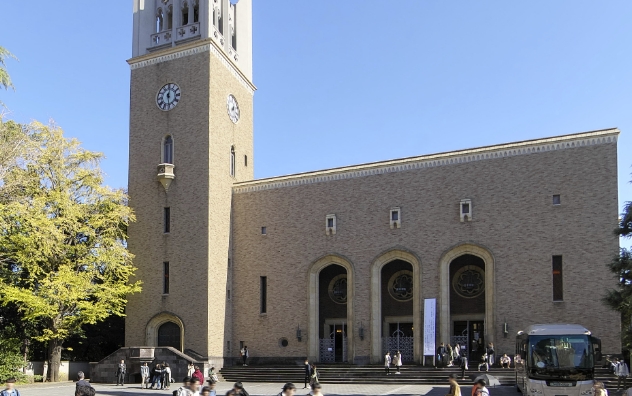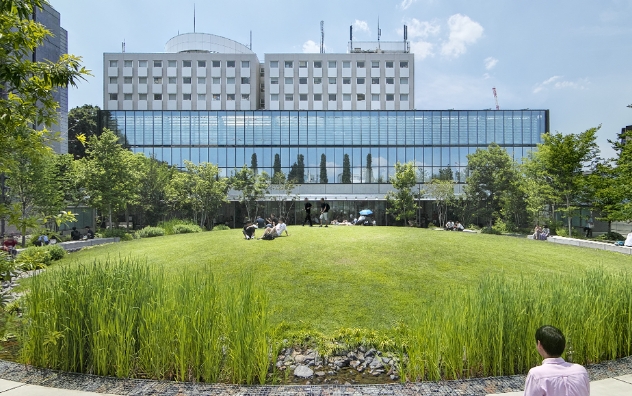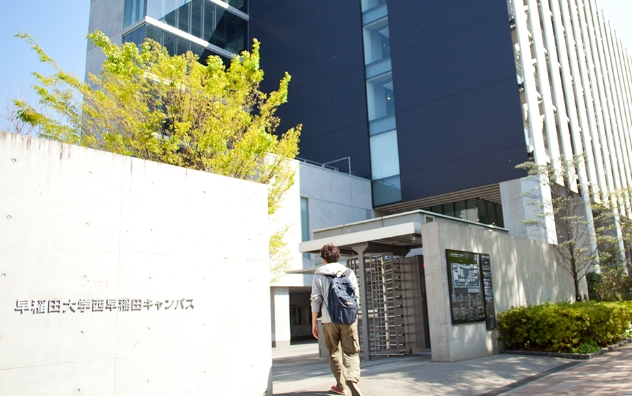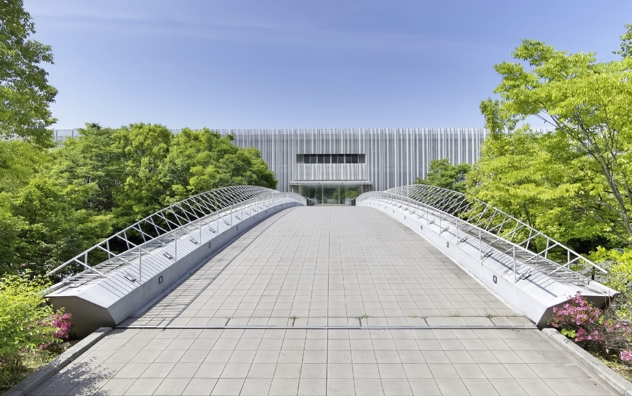How the Center for Japanese Language plays a role in student life at Waseda
Mon, Mar 27, 2023-
Tags
It goes without saying that studying abroad is a formative and challenging experience, no matter your age, background, or education level. Plunging into a social and cultural environment different from the one in which you grew up is necessarily a journey of discovery, revealing insights into yourself as much as the world around you. I anticipated as much before I moved to Tokyo to begin my PhD program in 2020. At Waseda, I’ve been blessed with opportunities to meet people from all around the world and receive institutional support to share my research at conferences.
Among the large and diverse community at the university, Waseda has roughly 6,000 international students in the 2022 academic year who hail from countries all over the world. While the university offers a number of English-language degree programs, improving your Japanese proficiency while studying here will no doubt pay dividends and give you a richer experience of Tokyo more generally. My own research doesn’t require Japanese per se, but I knew that I wanted to devote some serious time and energy to this endeavor if I was going to live in Tokyo.
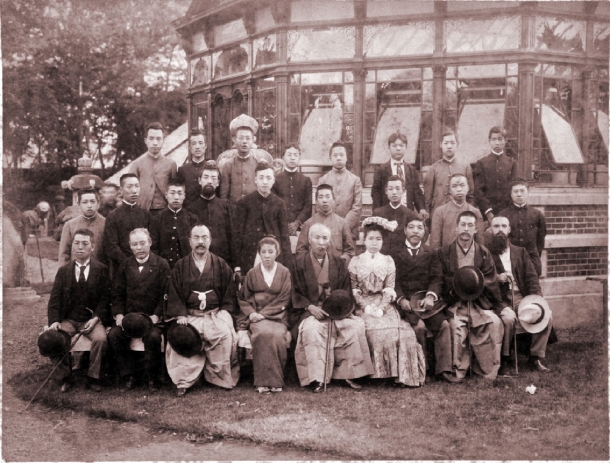
First international students from Qing China with Shigenobu Okuma and his wife (1903)
That’s where the Center for Japanese Language (CJL) plays a critical role in university life. The modern incarnation of CJL was established in 1988, although Waseda had accepted its first international students from China in the late 19th century. CJL services the community of Japanese language learners at Waseda, which includes not just international students, but a significant portion of Japanese students who have lived abroad.
CJL organizes and administers over 200 Japanese language courses per semester across eight levels, running the gamut from beginning to advanced. Though each student determines their own curricular pathway for their departmental or personal needs, comprehensive courses might be considered the cornerstone of the pedagogical offerings. These are the Japanese language courses with the most number of contact hours per week: 7.5 hours each week in levels 1 to 4, and 4.5 hours in levels 5 and 6. (Comprehensive courses are not available in levels 7 and 8.)
When I started my program at Waseda, I’d had around two and a half years of Japanese under my belt. I took the online Level Check Test that CJL offers and just barely placed into an intermediate level 4. After trying out Comprehensive Japanese 4, however, I realized I was way out of my depth. My fellow classmates were proficient at keeping up with our teacher’s rapidfire Japanese and spoke with much more nuance and eloquence than I was able to muster. For my own sake, I decided to go down two levels during the course registration period and spend some time relearning and mastering some fundamental grammar points and vocabulary, while getting more comfortable with speaking in general.
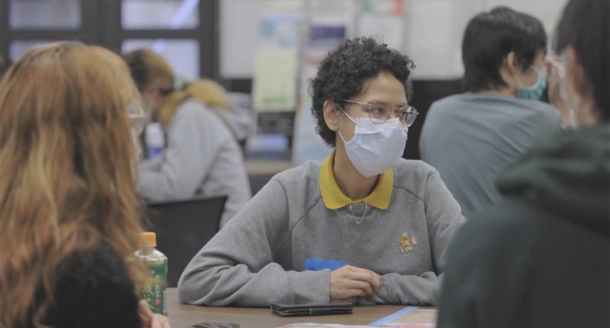
Waseda houses a diverse group of international students
There are over 200 course options at CJL in any given semester, covering a wide range of topics and skills, from the intensive linguistic focus of the comprehensive courses to socially or culturally themed offerings on food, anime, news media, music, literature, and more. Some Japanese courses can help you improve your academic reading or writing skills, while others train you on etiquette and communication for the workplace. In sum, there’s something for everyone—and the diverse range of students that enroll in these classes come from Waseda’s undergraduate and graduate departments, student exchange partners, CJL’s half-year or one-year language programs, visiting research programs, and more.
The majority of classes meet face-to-face now, but some are hybrid with online on-demand or real-time streaming components. Among the CJL courses I’ve enjoyed the most are a beginner/intermediate foray into gastronomic vocabulary and food writing; an intermediate course geared at improving natural intonation and pronunciation in Japanese; and an intermediate/advanced journaling course that asked students to reflect on and write about their formative experiences in life. The last course, in particular, was a wonderful opportunity to reflect on the places that have shaped me and share this narrative with supportive classmates from England, China, New Zealand, and France.
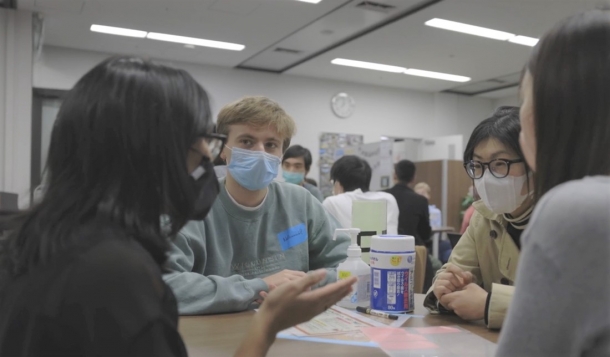
Students engaging in language exchange
Both input and output are extremely important for language learning, of course, and everyone has to determine what style, schedule, and rhythm works best. In addition to CJL courses, what has been most beneficial to me are my regular conversations with one-on-one tutors online and reading material that has held my interest.
Language is a living entity, at the end of the day. Through CJL and other means, you’ll surely be able to figure out how to make the Japanese language come alive in the most practical and edifying ways that fit your needs.
*This article was written and contributed by the following student.
Student Contributor
Mike Fu
Graduate School of International Culture and Communication Studies


